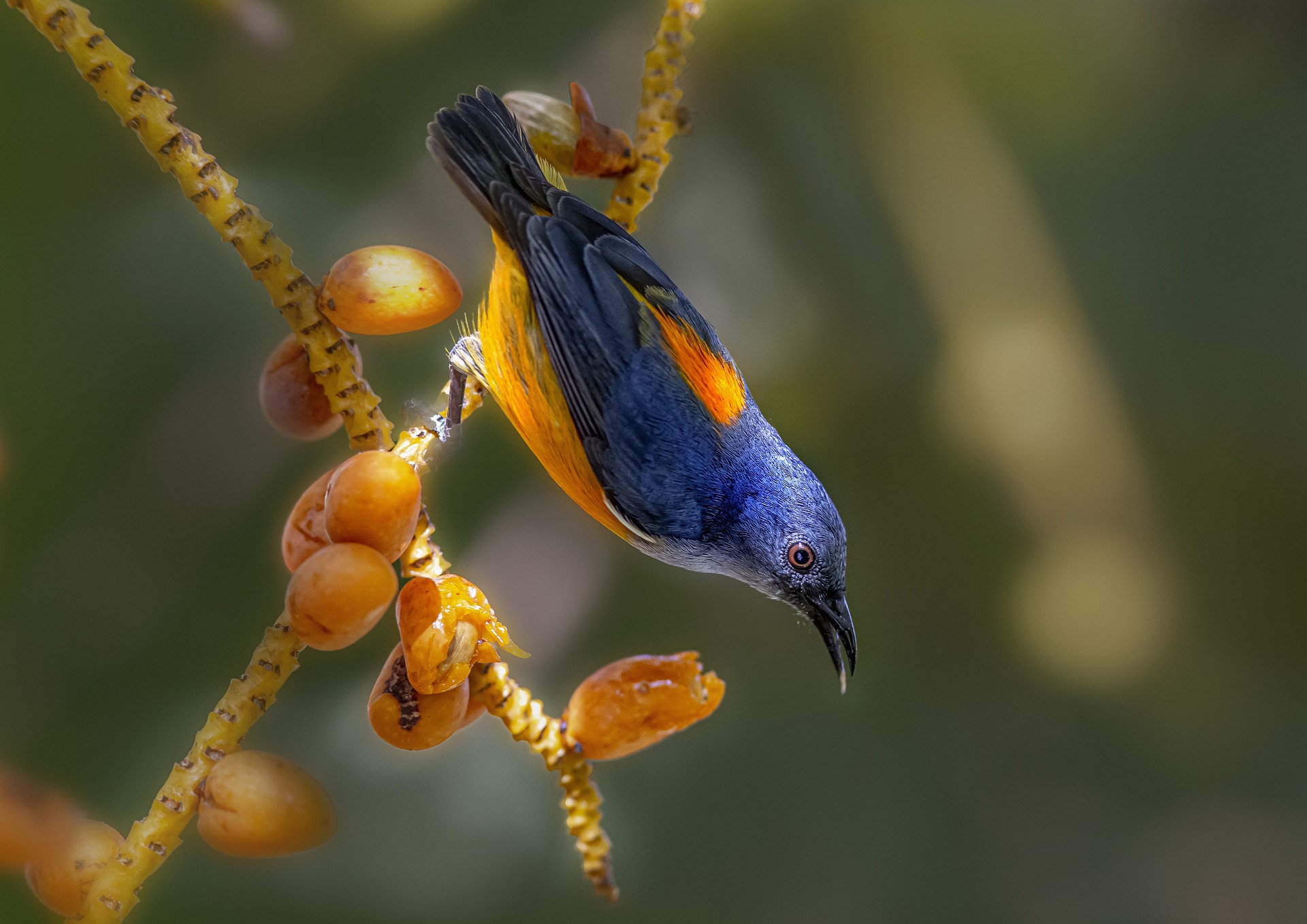The Orange-bellied Flowerpecker (Dicaeum trigonostigma) is a small bird species belonging to the family Dicaeidae, native to Southeast Asia. Here’s some information about this colorful bird:
- Appearance: The Orange-bellied Flowerpecker is a tiny bird, measuring about 8 to 9 centimeters in length. It has a short, stout bill and a rounded body. The male has a bright orange-red belly, contrasting with its olive-green upperparts, black head, and white throat. The female is similar but has a duller plumage with a yellowish-orange belly.
- Habitat: Orange-bellied Flowerpeckers inhabit a variety of forested habitats, including primary and secondary forests, wooded areas, and mangrove forests. They are also found in gardens, orchards, and other cultivated areas with flowering plants.
- Distribution: This species is native to Southeast Asia, including countries such as Thailand, Malaysia, Indonesia, and the Philippines. It is found in a wide range of habitats within its range.
- Diet: Orange-bellied Flowerpeckers primarily feed on nectar from flowers, using their specialized bills to extract the sweet liquid. They also consume small fruits and berries, as well as insects and spiders, supplementing their diet with protein-rich food sources.
- Behavior: These birds are highly active and agile, often flitting among the foliage in search of food. They are known for their acrobatic feeding behavior, clinging to flowers and probing for nectar with their slender bills. They may also hover briefly while feeding.
- Breeding: Orange-bellied Flowerpeckers build small cup-shaped nests made of plant fibers, moss, and spider silk, which they suspend from the branches of trees or shrubs. The female lays a clutch of eggs, which are incubated by both parents. Both parents also participate in feeding and caring for the young after hatching.
- Conservation: While the Orange-bellied Flowerpecker is not considered globally threatened, habitat loss and fragmentation due to deforestation and urbanization may impact local populations. Conservation efforts aimed at preserving and restoring forest habitats, as well as protecting key foraging and nesting sites, are important for the long-term survival of this species.
Overall, the Orange-bellied Flowerpecker is a charming and colorful bird species appreciated for its beauty, acrobatic feeding behavior, and important ecological role as a pollinator.
Views: 28
Subscribe to the newsletter:
